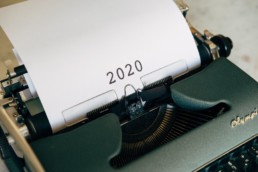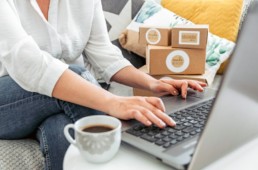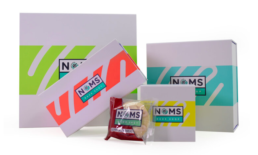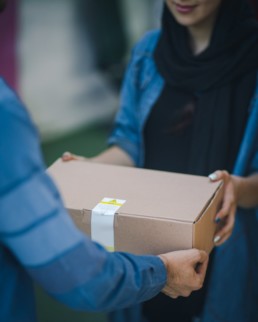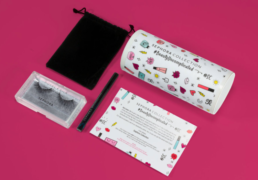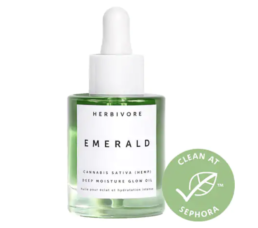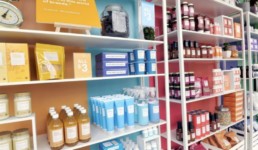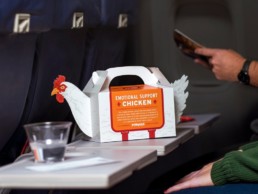VBX Solutions' 2020 Highlights
branding
Although the year 2020 was filled with new challenges the VBX Solutions team continued to do what we do best, provide phenomenal packaging and kitting services! VBX Solutions has been offering packaging services at every step of the supply chain; from creative, to manufacturing, to overseas freight to domestic distribution to customer service after the sale for nearly 20 years. Here is a look inside of VBX Solutions 2020.
Girls Beauty Date Kit from Sephora Europe
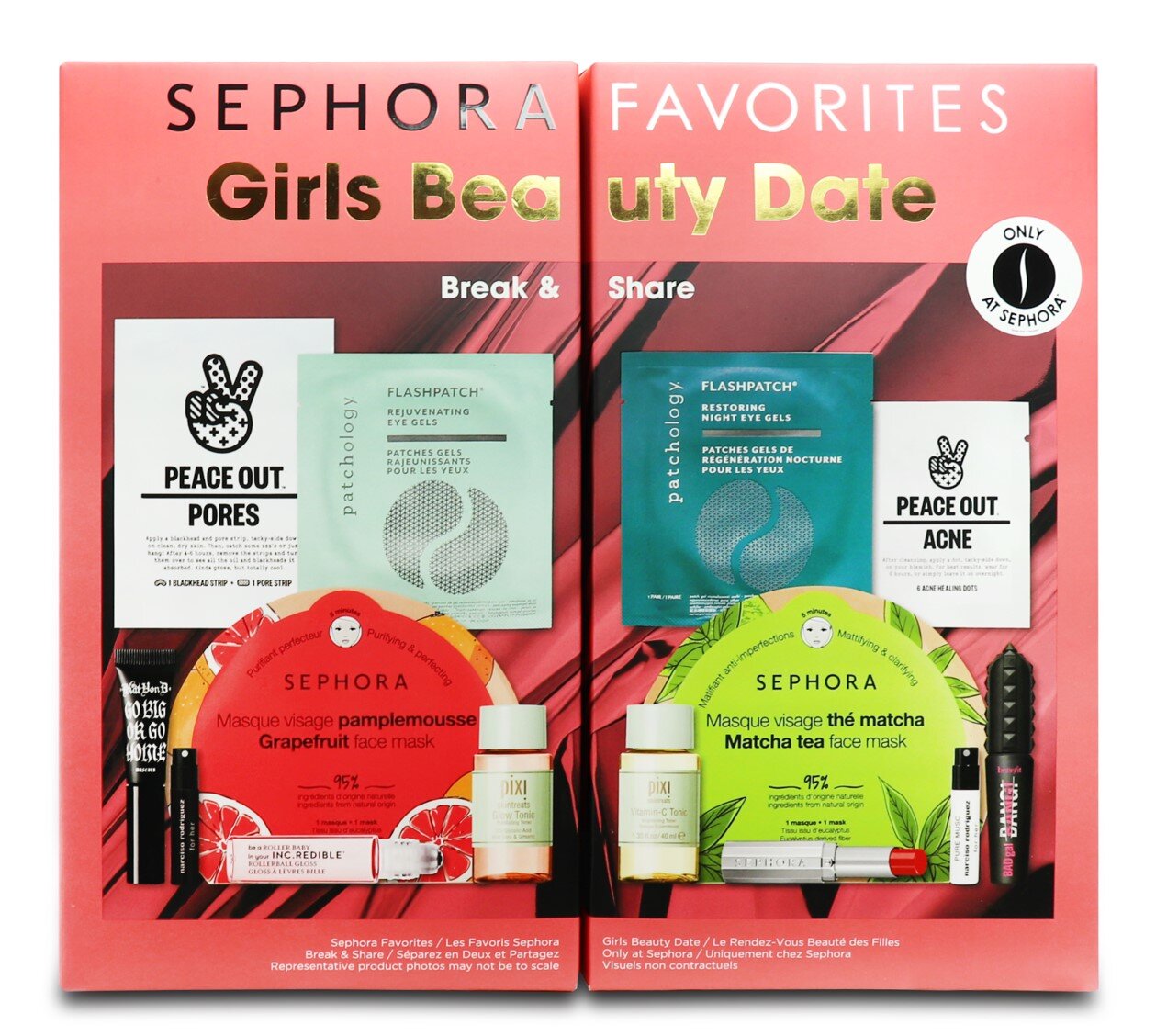
First up we have the Favorites Beauty Date Kit from Sephora Europe. If you have not already created a date night kit, now is the time! Date night kits, whether it be for best friends or couples, are the hottest new thing with social distancing norms. It is such a convenient way to bring your customers a fun activity to share with a loved one straight to their home!
12 Days of Clean Beauty Holiday Kit from Whole Foods Market

Up next, the 12 Days of Clean Beauty Holiday Kit for Whole Foods Market. We absolutely had so much fun with this one! A calendar leading up to the holidays with some of your company’s most popular items is the PERFECT way to engage with your customer base! Whether your regulars are buying it for themselves or buying the kit to gift to a loved one, a countdown calendar is a great way to spread awareness about your goods and keep people coming back for more.
Reusable Cut-and-Sew Tote Bag from Aerie

Our 2020 recap would not be complete without this aerie cut and sew tote bag. Reusability is IN. Who wouldn’t love a branded bag that can be reused for anything? Another great feature of any reusable item is the sustainability that comes with it. Sustainability has become an everyday topic for a lot of consumers, so why not kill two birds with one stone when it comes to exciting your market?
Fragrance Sample Kits From Shoppers Drug Mart Canada

Another international beauty! Check out these fragrance kits from Shoppers Drug Mart in Canada! Kits have never been more important in retail than now. Sampler kits have become a real game changer now that samples can no longer be offered in stores. Aside from the new norms, samplers have always been amazing for providing a delightful experience to consumers.
Branded Package From Kendra Scott
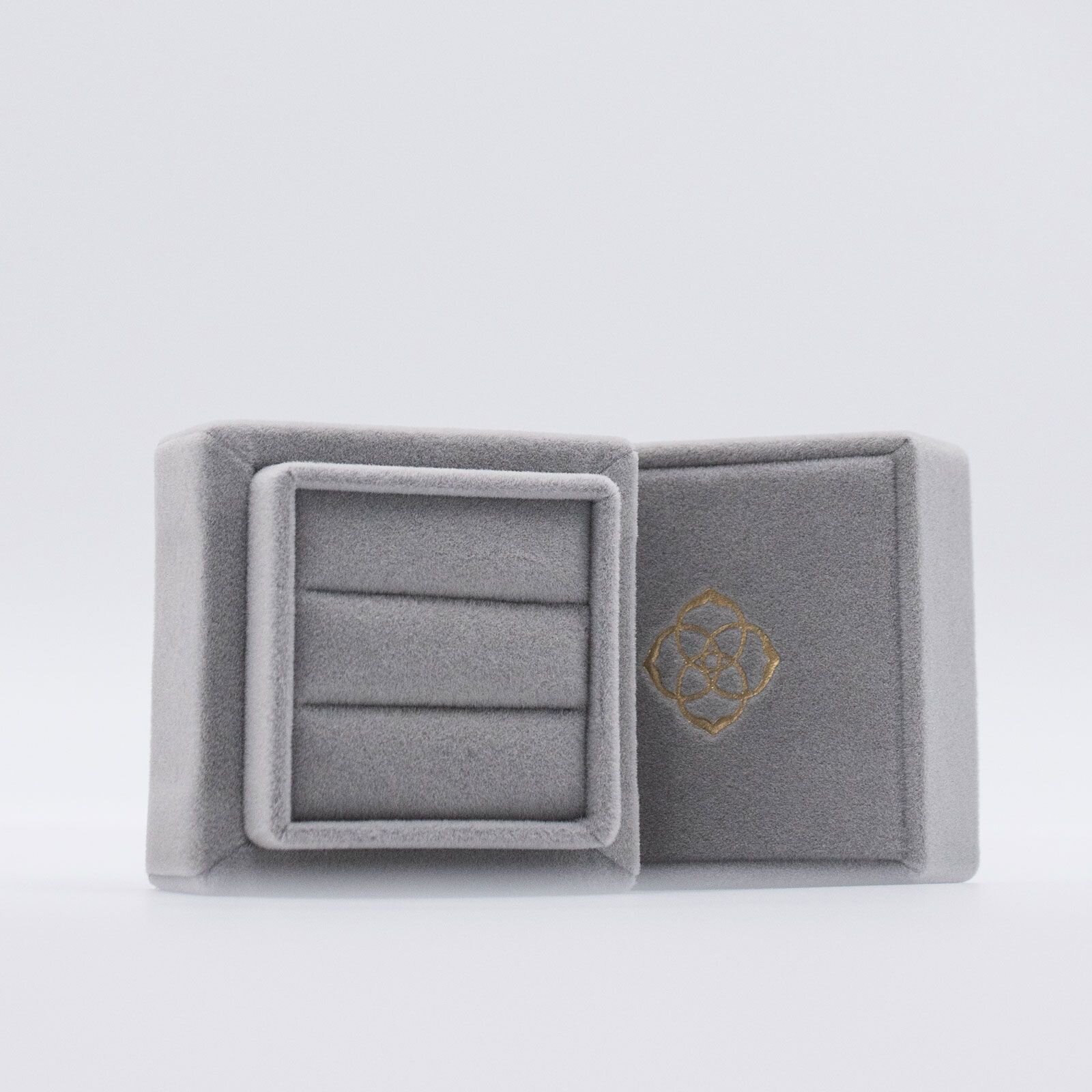
Lastly, but certainly not least, look at this elegant Kendra Scott branded package! We love the look of this beautiful design. A package that speaks for your company is such an important part of any business. Is your brand packaging up to date and ready to show your customers what you are all about?
There you have it! A look inside a few of VBX Solutions 2020 releases. Along with the creations featured above, we produced so many other different styles of packages and kits! See something you like or are interested in? Reach out to us now at info@vivaboxsolutions.com so we can get your 2021 packaging vision started!
Looking for a solution? We can help.
Headquarters
9211 Corporate Blvd Ste 110
Rockville MD 20850
Satellite Offices
Dallas, TX
Paris, France
San Francisco, CA
Scottsdale, AZ
info@vivaboxsolutions.com
Phone
800-529-1988
Minimum Order Quantities:
RPET Totes: 3,000
Kraft Shoppers: 5,000
Rigid Boxes: 3,000
Folding Cartons: 5,000
4 Need to Know Retail and Packaging Trends for 2021
branding
A lot changed in 2020 but few industries have been as affected as extensively as retail. Make sure you’re keeping up with the changes by staying current and aware of trends. Here are 4 retail and packaging trends to check out for 2021.
1) The importance of standing out in eCommerce

It is now critical to incorporate corrugate into your brand’s online packaging in a way that elevates the experience. Ecommerce shipping design is shifting from regular and plain packaging towards a more functional/stimulating unboxing process for consumers. You can achieve a more sophisticated “luxury corrugate” through thoughtful engineering and art direction, and by personalizing your brand’s shipping packaging.
A personal experience with a salesperson isn’t an option , so the packaging is the true first impression of your brand. Provide your customers a great experience through a shipping package that speaks for itself.
2) Sustainability continues to grow in importance

Aerie Reusable Tote Made From Recycled Material
Consumers are starting to pay more attention to not only what their products and packaging are made of, but also their carbon footprint. Often in the past sustainable options were more expensive but there are a many ways to go about creating sustainable packaging. The concept of “Reduce, Reuse, Recycle” can all be applied in different ways to design an eco-friendly package. Using recyclable materials or creating a reusable design with alternative materials are both ways to incorporate sustainability.
3) Sampler kits are driving huge sales numbers

12 Days of Clean Beauty Kit for Whole Foods Market
60% of customers who receive free samples covert to full-size products. Brands are seeing sales of sampler kits skyrocket compared to previous years. Consumers can no longer test products in store, so giving them the opportunity to test out products from the comfort of their own homes is critical. Sampler kits not only give consumers a chance to find their favorites from your brand, but also provide the excitement of experiencing something new. If your company isn’t offering sampler kits, now is the perfect time to start!
4) Loyalty programs are more important than ever

Your loyalty program can be a deciding factor in whether consumers choose you vs the competitor. Can you say your loyalty program is going above and beyond your customers’ expectations? These programs are an optimal way of thanking the customers who have stuck with you through these trying times. Showing them how important they are to your business is a necessity. A gift incentive, and an unexpected thank you note can go a long way toward building loyalty and creating advocates. VBX Solutions manages multiple loyalty programs and we’re happy to talk to you about how we can take yours to the next level.
What trends or opportunities is your business missing out on? The VBX Solutions team can help you explore your options, and work with you to find the best fit for your brand to drive sales. To learn about these options email us at info@vivaboxsolutions.com
Looking for a solution? We can help.
Headquarters
9211 Corporate Blvd Ste 110
Rockville MD 20850
Satellite Offices
Dallas, TX
Paris, France
San Francisco, CA
Scottsdale, AZ
info@vivaboxsolutions.com
Phone
800-529-1988
Minimum Order Quantities:
RPET Totes: 3,000
Kraft Shoppers: 5,000
Rigid Boxes: 3,000
Folding Cartons: 5,000
How to Promote a New Product to Customers
branding
One of the biggest challenges a brand faces when launching a new product is trying to figure out the best way to generate consumer interest. After all, most of us are loyal to certain brands and products, and it can be difficult to get people to try something new. This is especially true when the product being marketed has a lot of well-known competitors. How can a marketing team ensure that their brand’s product will be able to be seen- and hopefully purchased- by the right audience? Using custom packaging to help your product stand out against competing brands can help you attract your target market.
Of course, not all custom packaging is created equal. Certain factors affect the subconscious mind of the consumer when looking at packaged products, and can make a customer rank products as more or less attractive, based on the physical attributes of the packaging it comes in. A 2013 study (https://onlinelibrary.wiley.com/doi/abs/10.1002/mar.20651) revealed that attractive packaging triggered more intense brain activity, particularly in the areas of the brain associated with impulsivity when compared with neutral packaging. Additionally, both attractive and unattractive product packaging led to less activity in areas of the brain responsible for reflective thought than neutral packaging. This means that a customer tends to go with his or her gut reaction to a product, and the way it is packaged can make all the difference!
Using Custom Packaging to Promote Your Product
A product’s packaging can be far more important than you may think. Customers get their first impression of a product by looking at its packaging and can make snap decisions based on their initial reaction. For this reason, it is critical to ensure that your brand new product’s packaging stands up to the ultimate test of consumer preference. But how can you be sure that your product’s custom packaging generates the level of interest and excitement your brand needs to make people purchase the product? Here are some of the key psychological factors that make a consumer choose one brand’s product over another.
Color
Did you know that most people make subconscious judgments about a product within the first 90 seconds of seeing it? Not only that but the majority of consumers- nearly 85 percent!- base these first impressions on color alone. When it comes to custom packaging your new product, color is perhaps one of the most important factors to consider. Certain colors are believed to be more eye-catching than others, based on research. Using these colors- red, yellow, green, and pink- in your product’s packaging design may help to increase the likelihood of a customer looking at your product first. However, this doesn’t mean that every single product on the market should be packaged in one of these four colors; in fact, doing this would create an opposite effect on consumers, causing them to potentially pass your product up for blending in with all the rest. By ensuring that your product’s custom packaging is in a different color than any of the competitors in your market, you can create what is known as the “isolation effect” and capture your audience’s attention by being different from the rest. Bottom line: if your competitors all use pink in their packaging, use green. Dare to be different, and you may receive more positive attention because of it! It’s also important to consider the emotional connotation certain colors have with people. For example, blue and lavender are considered soothing colors, which is why they may be best suited for calming products, such as spa treatments or moisturizers. Meanwhile, products for the kitchen need to be associated with cleanliness, which is why white or silver are the most popular colors for the packaging of small appliances. By considering your product’s function, you can strike upon the appropriate color for your custom packaging.

Shape
Quick, what’s the shape of a Coca-Cola bottle? How about a can of Pringles potato chips? Sometimes, it’s the shape of product packaging that makes it stand out against the sea of competitors. While it isn’t often that a product’s custom packaging becomes more iconic than the product itself, like in the two above examples, thinking about how shape can affect a consumer’s choice can help you find the right direction for custom packaging your new product. While there is no such thing as one “right” shape for a product package, there are some things to keep in mind about psychology when you are trying to hit on just the right packaging design. For example, people tend to prefer curves to straight lines and, in fact, show a bias toward sharp, angular shapes in product packaging. This can be because of the way they perceive the product packaging will feel in their hands and naturally gravitate toward packages that are smoother and easier to hold. All of these consumer preferences are something you’ll want to strongly consider f you decide to literally think outside the box when it comes to custom packaging your product.
Texture
Product packaging that includes a distinctive texture can be beneficial in two distinct ways: not only can it help make your product easily identifiable even by touch, but it can also create a pleasing tactile experience for your customer that gives them a positive association with your brand and the product itself. Choosing a fun texture will encourage consumers to hold your product’s package for longer than they may have with an untextured package. This, of course, can lead to them purchasing the product, even if they didn’t intend to buy anything at all! Smooth matte and high-gloss surfaces can be used to make custom packaging pleasing to the touch, as can soft, fluffy textures. Using texture in your product packaging can also help convey a certain air of elegance or prestige about your brand, causing customers to look upon it as a luxury item. Some brands that market high-end products rely on texture to connote an upscale, sophisticated feeling and make customers feel elegant for choosing them. Depending on the nature of your brand and product, you can make an appropriate choice for a custom packaging texture that makes customers want to hold it forever!
It’s easy to overlook the print on a product’s custom packaging, especially when you are already thinking about its color, shape, and texture! However, typography can make a huge difference in the success of a product. Since customers who are unfamiliar with your new product will be inspecting the package for information about it, they will be sure to make a stronger connection with packaging that contains a font that resonates with them. It goes without saying that easy-to-read text will help your customers better understand the attributes of your product in a shorter time, but there is something to be said for an ornate script if that font better exemplifies the nature of your brand. Once again, choosing the typography that will accompany your other custom packaging choices is more about understanding the mission and story of your brand: try to choose a font that is short-hand for your brand identity and how you want to be perceived by your audience. For example, products that are more whimsical in nature, such as children’s toys, are best served by a playful, handwritten-looking font, whereas a luxury brand might opt for a serif print font to add a certain old-school weight to the packaging.
By understanding how you want your product to be perceived by the public, as well as knowing your target audience, you will be able to hit upon a winning packaging design that can get you noticed by the right people. Be sure to refer to these four key factors and see how your custom packaging design stacks up!
Looking for a solution? We can help.
Headquarters
9211 Corporate Blvd Ste 110
Rockville MD 20850
Satellite Offices
Dallas, TX
Paris, France
San Francisco, CA
Scottsdale, AZ
info@vivaboxsolutions.com
Phone
800-529-1988
Minimum Order Quantities:
RPET Totes: 3,000
Kraft Shoppers: 5,000
Rigid Boxes: 3,000
Folding Cartons: 5,000
Developing Promotional Kits: 5 Tips For Success
branding
We’ve all heard the expression “thinking outside the box” so often, it’s become something of a cliche. But what about rethinking the box itself? When your marketing team is developing promotional kits for a client, it’s essential to think about what the brand hopes to accomplish by launching this kit, and to use the product’s strengths, selling points, and target audience to devise a fresh new way to reach a possibly already oversaturated market.
Today’s marketing departments face unique challenges that largely didn’t exist just a decade ago. While their predecessors were up to their eyeballs in decisions pertaining to TV, radio, and print media, present-day marketing professionals need to concern themselves with how their client’s product or service is received by a global audience connected via social media. Not only has our consumer base grown in numbers, but it has also grown in sophistication- people no longer want to feel as if they are being sold something, and instead are more drawn to story-driven narratives about a company’s founders, brand identity, or social consciousness. This authentic aspect helps drive sales, build brand loyalty, and raise the level of consumer awareness for a company, and must carry over from website to social media pages to email campaigns. By developing promotional kits, your marketing department can help make your brand’s story more three-dimensional and bring it to life by giving consumers an actual, physical thing they can touch and experience. The ability to hold something in your hand, to try it out and feel it, can help make more conversions than even the most polished SEO. In a digital world, it’s still important for companies to establish a physical connection between their products and their customers, and there’s no better place to start than with a well-developed promotional kit. Here are a few fundamentals for developing promotional kits that can help you turn even the most jaded consumers into an enthusiastic customer base.
What’s in the box? WHAT’S IN THE BOX???

The very nature of a promotional kit is to make someone excited about opening it! Think back to being handed a birthday present in your childhood: chances are the more beautifully the box was wrapped, the more you couldn’t wait to see what was inside. The same holds true for a promotional kit- the more creative the package, the more a consumer is likely to want to open it. By developing a promotional kit design that aligns with the identity of the brand and resonates with your target market, you are getting a lot of people interested in your product before they’ve even seen it.
Picture Perfect
OK, pop quiz- what’s the first thing people do these days when they are served a particularly exquisite meal? They whip out their mobile devices and photograph their dishes for social media, right? And once it’s posted, that’s free advertising for the restaurant that prepared the food. What if you could generate the same frenzied excitement responsible for restaurant food photography with your promotional kit? By getting exceptionally creative with packaging, your promotional kit could find itself featured on many an influencer’s Instagram feed. In fact, if you’ve got an impressive-enough promotional kit to warrant it, you could find your product featured in a YouTube unboxing video with over 1 million views, depending on who received it. That’s right- your promotional kit could wind up being slowly, lovingly taken out of its box by a high-profile YouTuber while 1 million people watch intently. It pays to create promotional kits that inspire that kind of large-scale intrigue!
Be Heard
A number of companies in today’s marketplace use their brand as a platform for speaking out about social, political, and environmental issues that are near to their hearts. A promotional kit can make a significant impact on a like-minded target audience by incorporating these views and ideals into its packaging strategy. Several quick-service restaurant concepts, for example, use inspirational quotes from famous people such as Gandhi, Rosa Parks, and Anne Frank, to decorate their paper bags, cups, and other consumables as a way to promote their products and their values simultaneously. By developing promotional kits with a message, a brand can be heard and seen at the same time, and build a following based on shared ideals and beliefs.
Take It Easy
Of course, when developing promotional kits for a brand, the goal is always to make the company stand out from the rest of their competition, but this does not necessarily mean the kit has to be overly complex. In fact, the more complicated the design of your promotional kit, and the harder it is to open, the more of a turnoff it can be for recipients- not just for the kit but potentially for the brand itself! It’s best to take a simple design concept and build on it from a creative standpoint. That way, your target audience will be able to appreciate the kit’s singularity without becoming frustrated while opening it!
Listen to Your Brand
As marketing professionals, it is your job to take a kernel of an idea and help it explode into a creative, memorable, and beloved concept. Products are helped along by the catchy slogans, engaging content, and exciting imagery that their advertising and marketing team comes up with, but not even the most awe-inspiring tagline will do a single thing unless it speaks to the brand’s already-existing values. For example, a fast-food burger joint markets a lot differently than, say, an investment firm, just because of how different the two products are. By staying tuned into your core audience, the nature of the product itself, and how the brand wishes to be represented, your team can develop a promotional kit that hits all the right notes!
The art of developing promotional kits is something that will continue to be highly valuable to a marketing firm, regardless of how much farther down the digital rabbit hole we go. People are always going to want an actual product sample they can try before they commit to a purchase, and by knowing exactly how to put together a killer promotional kit, your team will have a distinct advantage over competing brands who are putting out less exciting kits, or no kits at all, to consumers.
Looking for a solution? We can help.
Headquarters
9211 Corporate Blvd Ste 110
Rockville MD 20850
Satellite Offices
Dallas, TX
Paris, France
San Francisco, CA
Scottsdale, AZ
info@vivaboxsolutions.com
Phone
800-529-1988
Minimum Order Quantities:
RPET Totes: 3,000
Kraft Shoppers: 5,000
Rigid Boxes: 3,000
Folding Cartons: 5,000
Using Custom Promotional Boxes in a Marketing Campaign
branding
In order to understand the challenges faced by the average promotional marketing team, it’s necessary to get inside their heads a bit. What’s the biggest obstacle they need to overcome in order to get consumers to use their product or service? How can they effectively introduce their brand to their core audience in a way that informs, entertains, and educates? When it comes to marketing, custom promotional boxed are one of the best ways to meet these objectives and build a strong brand identity while providing the information their target market needs about the product they are offering. Here are some basic strategies for custom-packaging promotional boxes in a way that will get the right people to pay attention to your brand.

Unboxing Match
If you’ve been paying attention on social media lately, you’ve likely spotted a trend that’s showing no signs of going anywhere. From YouTube to Instagram, unboxing videos are a widespread phenomenon that can provide maximum exposure and recognition for your brand at absolutely no cost! An unboxing video is just what it sounds like: a video of a person unpacking a new product so that other fans of the product or brand can see its contents. While an unboxing video can be made for just about any product on the market, it is most common to see an electronic device, such as an iPhone, or a collectible toy, such as a limited-edition LEGO set, get unboxed for others’ viewing pleasure. The unprecedented rise of the unboxing video has made many companies pay closer attention to how their items are packaged, and strive to make every unboxing experience as aesthetically-pleasing and satisfying as possible.
Since a custom promotional box’s primary function is to introduce consumers to a new product or service, or even to the brand itself, it makes sense that, if a promotional box was packaged interestingly enough to generate excitement and intrigue, unboxing videos would be made and shared over social media outlets by excited members of your target audience. This exposure could potentially lead to the brand and product being blogged about and reported on by industry heavyweights and consumer reviewers alike. All of this publicity can be very good for an as-yet-unknown startup company or new product that has not gained significant traction among its core audience. By amping up the excitement with custom packaging, your promotional box stands a better chance of becoming the subject of positive buzz.
Identity Check
When you think of the phrase “brand identity,” chances are you think of that handful of mega-corporations who have created entire mini-societies based on consumer devotion to a product. A solid brand identity is a quick and efficient way to summarize your company’s mission, values, and process while also building an emotional bond with any consumer who shares those sentiments. Before you plan your packaging strategy for a custom promotional box, it is vital to give serious thought to just how you want your target audience to feel about your company and its products based on this first experience.
Are you a quirky, irreverent anti-corporation that wants to do some good in the world? Are you a serious-minded company that business professionals have relied on for over five decades? Perhaps you are an industry disruptor poised to change the face of our modern world forever. Whatever your brand, the first step of your marketing campaign should be to define its identity and then use that information to design your custom packaging concept for promotional boxes.
Make It Stick
People receive things in the mail all the time- and most of it gets tossed in the trash or recycling bin! It’s sad but true that a substantial number of promotional marketing materials never even get opened by their intended recipients. What if you could guarantee that your company’s custom promotional box would be the one they open? With creative custom packaging, you can! People enjoy being entertained and pleasantly surprised, and they want to feel as though a specific brand message resonates with them. In our modern world, we receive so much input that it all starts to sound like white noise after a while. By custom-creating a standout promotional box, you can ensure that your target market will tune in for a moment and receive your brand’s message loud and clear. With a creative approach to packaging, your promotional box will be the one that sticks with your audience long after they’ve opened it.
Take it Easy
Just because your custom promotional box’s packaging is innovative and eye-catching, that doesn’t have to mean it’s hard to open! Think of the end recipients and the experience you want them to have, so you can customize your promotional box in a way that eliminates difficulty and frustration. All too often, marketing departments choose form over function, which can lead to costly product packaging blunders. Imagine how a consumer will feel about your brand if he or she can’t easily and quickly open the promotional box’s packaging? It’s best to make sure that however you choose to capture your brand values through packaging, it will not require an advanced engineering degree to actually open it!
Label Yourself
You want to make sure that your custom promotional box not only ends up in the right hands, but is then opened and reviewed by those who need to hear your message most. There’s no way you’re going to achieve your end goal of imprinting your brand logo onto the brains of everyone who encounters your promo kit if you don’t first imprint it on the packaging itself. Highly-visible, brand-specific labeling that uses both the company name and logo will go a long way toward helping people remember you. A delightfully-packaged little promotional box that sparks imagination and generates buzz is great, unless nobody can even figure out who put the box out in the first place! By making sure your brand name is front and center, you can be sure that people will be able to identify your company before they ever open the package.
When you are custom-designing the packaging for your promotional boxes, be mindful of the end result your organization is shooting for, and you’re sure to land on just the right strategy! When in doubt, make sure to refer to these helpful hints and your promotional materials will stand head and shoulders above the rest of the competition.
Looking for a solution? We can help.
Headquarters
9211 Corporate Blvd Ste 110
Rockville MD 20850
Satellite Offices
Dallas, TX
Paris, France
San Francisco, CA
Scottsdale, AZ
info@vivaboxsolutions.com
Phone
800-529-1988
Minimum Order Quantities:
RPET Totes: 3,000
Kraft Shoppers: 5,000
Rigid Boxes: 3,000
Folding Cartons: 5,000
Using Customer Loyalty Programs in Retail
branding
With the rise of big-box stores, online shopping giants, and same-day deliveries, the retail landscape has changed dramatically in a relatively short period of time. Consumers now have the freedom and flexibility to shop for virtually anything, any time of day, and enjoy affordable pricing, free shipping, and other perks that were once unheard of in the retail world. Because of this, the competition between retailers has never been more fierce. It is getting increasingly difficult to build and retain consumer loyalty with so many options available to shoppers nowadays. This seismic shift in how people purchase necessities and luxury items has caused a struggle among retailers to keep up with changing trends, as well as a constant search for a magic formula to stand out against competitors.

One of the most popular ways retailers maintain a healthy, thriving customer base is through loyalty programs. Many larger retailers offer customer loyalty programs that offer discounts and rewards earned through purchases. This strategy is effective not only by giving consumers an added incentive to do their business with a particular store, but also by ensuring that customers are likely to spend even more money when they return to use their reward points or earned discounts.
What Makes a Customer Loyalty Program Successful?
In order for a retail customer loyalty program to gain success among its target audience, it should meet the following requirements:
No Cost to Join
If a customer loyalty program is free, customers are far more likely to sign up than if there were a monthly or annual membership fee. While some retailers do offer rewards programs that cost money to subscribe, the free loyalty programs are almost universally more successful and popular than the ones that charge.
Keep in mind, however, that in order for a retailer to support a free rewards program, they must be able to cover the costs of the goods or services that are being given away or reduced in price. A prime example of this is the Starbucks rewards program, which is free to join and incredibly popular among its customers. Recently, customers could receive any menu item for free each time they earned 125 stars, at the rate of one star for each dollar spent in the store. Additionally, certain promotional events allowed customers to earn double or even triple stars on special days or at off-peak, “happy hour” times of the day. However, Starbucks recently had to change its reward redemption structure, as it became clear that customers were using their earned rewards stars toward big-ticket items, such as salads and sandwiches, rather than much-cheaper cups of coffee. The rewards program now operates on a tier system, but this has not seemed to hinder the success of the program.
User-Friendly
From the basic structure of the customer loyalty program to the ease and convenience with which points can be redeemed online, user experience is everything. When rolling out a new customer loyalty program, a retailer must make sure that both the desktop and mobile website or app supporting the earning and redemption of points is intuitive, convenient, and simple to use. Additionally, the structure of the program should be easy to understand and clearly laid out to avoid confusion and frustration among customers.
Not surprisingly, the Amazon Rewards Visa is one of the most user-friendly customer loyalty programs in existence. A digital native, Amazon has always led the pack when it comes to innovating online retail systems, and its rewards program is no exception. Though becoming a Rewards Visa member does require signing up and being approved for an Amazon credit card, after that, the reward points are as easy to redeem as they are to earn – both on and off the Amazon website. Even more importantly, members are able to access their point balance and view past transactions, earned reward points, and more on the website or mobile app, making it convenient, easy, and, as Amazon itself would say, “frustration-free.”
Great Incentives
As consumers everywhere can probably tell you, not all customer loyalty programs are created equal. Some retailers, for example, offer things like “store cash,” which can be redeemed only during select weeks and take a percentage off of a future purchase, rather than giving a customer anything for free. A good rewards program should offer a healthy balance of same-day discounts and the ability to redeem points toward free items. Some of our favorite incentives give the consumer a choice of special addition kits which make them feel rewarded while also introducing them to new products.
However, the ease with which customers can receive rewards is just as important as the incentives themselves. A number of customer loyalty programs tend to make people spend far too much before parting with even the smallest incentive on the tier. Movie theater rewards programs are a notorious offender, forcing rewards members to spend literal hundreds of dollars on ticket and concession purchases before even being granted a free small popcorn valued at five dollars!
No Expiration Date
A reward earned should be a reward kept. However, some retailers have structured their customer loyalty programs to include expiration dates for discounts and free items, even though a consumer has earned the points fair and square. The expiration date strategy is a purposeful one, designed to make customers come back sooner. However, it can be a major turnoff to earn enough points for a large reward, only to be told by a sales associate that those points expired one week ago! By structuring a customer loyalty program with no expiration dates, you are showing customers that you value them as people, not dollar signs.
Chick-Fil-A does a very nice job of handling the balance between when points are earned and when they are redeemed. Their loyalty program allows customers to spend their accumulated points either little by little or in one lump sum. A customer can use the Chick-Fil-A mobile app to easily keep track of how many points they have earned, as well as which free reward items are available to them. Once a customer redeems a reward, it becomes a coupon that is only available for 24 hours, but since most customers wait to redeem their reward points until they are already at the restaurant, this system does not cause confusion or frustration for anyone involved.
By keeping your customer loyalty program simple, free, and easy to use, you will be able to provide incentives that entice consumers to keep coming back to your retail store over and over again. Follow these guidelines when structuring your customer loyalty program and you will have a devoted customer base in no time. How can Vivabox help you create a successful loyalty program? Contact us to find out.
Looking for a solution? We can help.
Headquarters
9211 Corporate Blvd Ste 110
Rockville MD 20850
Satellite Offices
Dallas, TX
Paris, France
San Francisco, CA
Scottsdale, AZ
info@vivaboxsolutions.com
Phone
800-529-1988
Minimum Order Quantities:
RPET Totes: 3,000
Kraft Shoppers: 5,000
Rigid Boxes: 3,000
Folding Cartons: 5,000
6 Ways to Use Packaging Strategies in Marketing
branding
The concept of using product packaging as an effective and memorable marketing tool has been around for over 150 years. For over a century, companies have utilized creative packaging strategies to ensure that their products resonate in the minds of consumers and stand out against the competition. From the iconic shape of a Coca-Cola bottle to popular cereal-box mascots Snap, Crackle, and Pop, using product packaging as a means to cement a brand identity in the collective conscious is nothing new. However, thanks to advances in technology, we are now able to incorporate product packaging strategies into marketing more seamlessly and effectively than ever before. Creative minds at companies across the United States work tirelessly to make more and more innovative packaging decisions so that their products will be the ones their consumer base remembers.
With the abundance of packaging options available to product manufacturers, it can be difficult to select one that stays on-brand, creates excitement and appeal, and helps distinguish the product from its peers at a single glance. While you want to form a lasting impression among your audience, you also want to make sure they understand what your company and its products stand for, so they can build loyalty to your brand. Here are seven of the most popular ways to use a strong product packaging strategy in your marketing campaign.
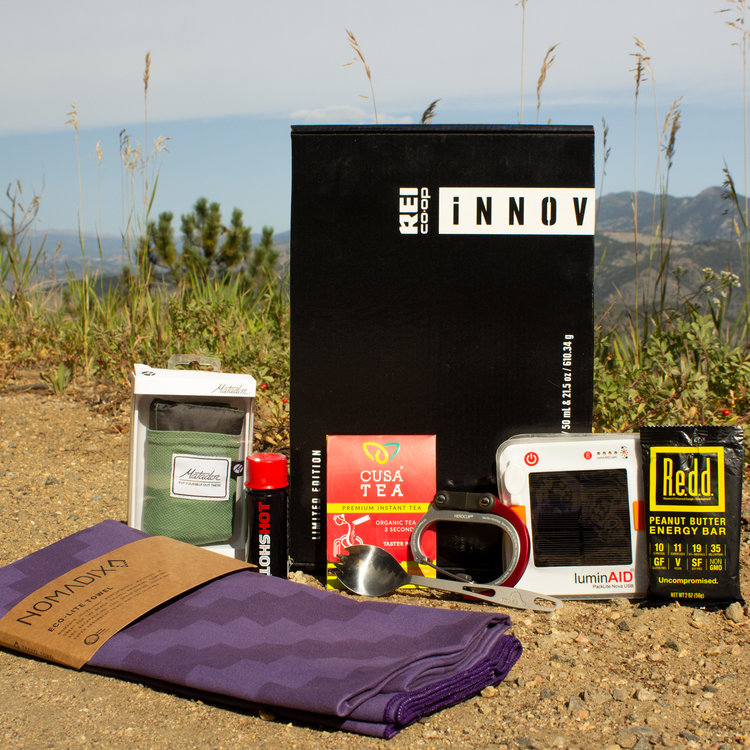
Keep it Green
As we continue to become more conscious of our collective carbon footprint, we are more interested in purchasing products with eco-friendly packaging. By choosing to package your product using biodegradable or reusable materials, you are letting your consumer base know that your company is deeply committed to preserving our environment. You can put your target audience’s mind at ease by using responsibly-sourced materials, such as plant-derived plastics, recycled cardboard, or natural fibers, in your product packaging, so that your consumer base feels good about supporting a company that cares about our planet.
Insta-Worthy Inspiration
We live in a society that loves to share photos of everyday life, and no platform makes it easier than Instagram! Your consumers are constantly on the lookout for “Insta-worthy” photos that will generate buzz on social media. Consider a packaging strategy that absolutely pops in a picture, whether your packaging is luxe, rustic, or just downright quirky. By packaging your product in a highly attractive way that looks amazing on Instagram, filter or no filter, you’re on your way to having it picked up by a brand influencer. This kind of exposure could skyrocket your business overnight!
Stay True to You
When consumers think of your brand and products, what adjective do you want them to use to describe you? The answer to that question can go a long way toward deciding on a strong packaging strategy. It’s important to let your choices be guided by your brand values, not the other way around. For instance, a family-owned company that makes and sells artisanal cheese probably will want their products to evoke imagery of tradition, legacy, and old-fashioned quality, while a company that manufactures high-end cosmetics may opt for ultra-luxe packaging that puts consumers in mind of glamour and celebrity status. No matter what type of product you sell, it is always important to make sure your packaging is in line with the rest of your branding.
Make it Limited
One sure way to generate excitement is to release limited edition products complete with special packaging. Perhaps you want to market goods that are only seasonally available, such as special coffee blends or candle scents, using holiday-themed packaging. Or maybe you have created anniversary-edition packaging to commemorate the number of years your company has been in business. No matter the occasion, a packaging strategy based on a timely or seasonal offering creates a sense of urgency that drives consumers to buy the items you are selling before they run out.

Send a Message
Does your company place value on being an ethical and responsible voice for certain political and social issues faced by members of you target audience faces? A number of companies choose to use their packaging as a platform for sending messages that correspond with the core beliefs of their organization. For instance, if your company is committed to promoting children’s literacy, you may want to use a packaging strategy that incorporates famous quotes from beloved children’s books. Similarly, if you own a business that strongly supports animal rights , you may wish to include messages that echo your commitment to the cause on all of your product packaging. You can use your products to educate your consumer base, which can make a huge impact on our society!
Simplify…and Save!
Sometimes the most effective packaging is none at all! If you are trying to convey a brand image of simplicity, it may be best to employ a minimalist packaging strategy. If, for example, you wish to reduce the wasted space created by standard food item packaging, such as a box or can, perhaps try to use a slimmer, more streamlined container to stand out. Not only does a packaging decision like this help distinguish a particular brand from the rest of the competition, but it also can help a company save money by cutting down on packaging costs. Additionally, a simplified container can add value for consumers who wish to cut down on unnecessary bulk for easier storage and disposal. By keeping it simple and designing product packaging that carries a lower profile than that of your competitors, you’re actually helping it stand out from the rest of the competition!
When choosing the right packaging strategy for your product, keep in mind that, first and foremost, you must choose something that will resonate with your target audience and cause them to select your brand over others on the market. The more you know about your chief consumers, the more you will be able to make informed packaging decisions based on what matters most to them, By sticking to your core brand values and knowing your audience, you can effectively market yourself using distinctive packaging that sets you apart from the crowd!

Looking for a solution? We can help.
Headquarters
9211 Corporate Blvd Ste 110
Rockville MD 20850
Satellite Offices
Dallas, TX
Paris, France
San Francisco, CA
Scottsdale, AZ
info@vivaboxsolutions.com
Phone
800-529-1988
Minimum Order Quantities:
RPET Totes: 3,000
Kraft Shoppers: 5,000
Rigid Boxes: 3,000
Folding Cartons: 5,000
How Packaging and Branding are Bringing CBD Mainstream
branding
Research that addresses the benefits of cannabinoids (CBD) on the human body is becoming more recognized and accepted, and the awareness of wellness, skin care, and CBD is part of that growing recognition. PSA: cannabinoids and get-you-high marijuana are not the same things. CBD does not contain the ingredient that gets you high (THC).
There is still a ways to go, as the FDA continues to move slowly in its endorsements for cannabinoids and it is not yet legal in several states, but there are many companies, startup and established alike, currently embracing–within legal parameters–CBD in beauty and beverage products, especially as state and federal laws become more inclusive of CBD products.
As the public becomes more aware and accepting of the benefits of CBD in beauty products (and beyond), branding and packaging will be a key step to consumer trust and confidence, especially in these transitional stages.
More than that, though, new entrepreneurs and brands are doing away with marijuana-leaf logos and demystifying the dosing and buying of CBD by providing education and premium packaging designed to increase both understanding and acceptance of these products and this ingredient.
First, a Quick Science Lesson
In a recent CBD for Life article, they explain that scientific researchers have shown undisputable CBD connections beneficial to the human body. “It is because of how CBD communicates with the endocannabinoid system,” the article said. The human body has a system of endocannabinoid neurotransmitters, or receptors, and “These receptors are spread throughout the body, but are observed mostly in the skin.”
What has been scientifically proven is that the human body has a natural endocannabinoid system, which means there is a chain of receptors that connect every part of the human body, from the tissues–to the nerves–to the mind. Phytocannabinoids are produced in nature (the marijuana plant system, for example) and can be consumed by the human body to create a relationship of benefits. Although cannabinoid products can be found in other types of plants, like echinacea, liverwort, pepper, and even chocolate, CBD in phytocannabinoids just so happens to have the most potent and beneficial effects for the human body.
CBD and the Beauty Industry
According to a January 2019 report by Beauty Packaging, “Cannabis is known for stress-reducing and pain-relieving benefits. Use of CBD products [for skin] can reduce redness, irritation and even acne.”
Neiman Marcus recently introduced their CBD beauty line and Kim D’Angelo, beauty buyer at Neiman Marcus, recently explained that
“Cannabis beauty brands are becoming increasingly popular and CBD products are the next big thing in beauty.” Such products are comparably priced to other luxury brands like Sephora, L’Oréal, and Estée Lauder.

https://www.neimanmarcus.com/p/ildi-pekar-sleeping-mask-infused-with-cbd-oil-1-1-oz-30-ml-prod219110020
Neiman Marcus I-Pekar CBD Oil Skin Care
Another well-established company, Barneys New York (as well as their locations in Chicago, Beverly Hills, and Las Vegas), has also released a new CBD skin care line “Lab to Beauty.” They promote their products by touting “the pure potency of plants, combined with the healing effects of CBD.”

https://www.barneys.com/product/lab-to-beauty-the-cbd-drops-506111933.html
Barneys New York “Lab to Beauty”
More so, independent startups like CBD for Life and Fleur Marché are offering quality products and walking consumers through the process if they are unsure of their state’s legal boundaries. Furthermore, their packaging starts to play more on the natural, sustainable elements of cannabinoids rather than the more stereotypically rebellious aspects.
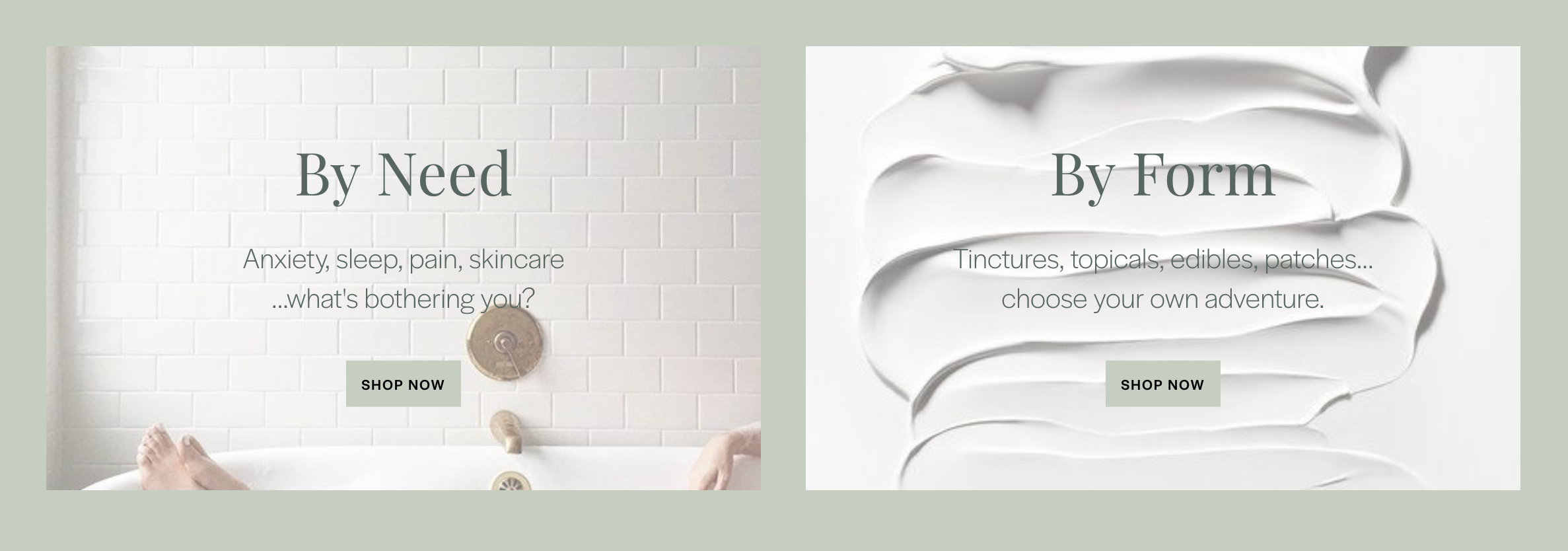
https://fleurmarche.com/
Fleur Marché
Of course, because of current restrictions, they are only sold in locations where states have already legalized medicinal and/or recreational use as well. Although this is an initial hindrance for the mass consumer, the trend shows CBD and other cannabinoid products are becoming more accepted and could soon be in a store near you, or at least online ordering without repercussions. It is the subtle and medicinal message that continuously needs more strategic attention.
Why Packaging and Branding Matters
Now that we have addressed scientific and legal issues (phew!), let’s get down to how packaging becomes the perfect bridge between consumer skepticism and confidence, as well as overcoming cannabis industry stigma.
Most consumers are still unaware of the differences between hemp, THC, and CBD–and the image of legalization is a narrow one, which depicts a “4:20” recreational lifestyle or, say, images of Shaggy from Scooby Doo: “Zoinks!” This is an unfair representation, and many consumers are starting to understand this. But the packaging and branding industries can easily help alleviate this. Here are a few examples:
First, Vivabox has been addressing the importance of sustainability with our clients, and in an industry like cannabinoids, it is a primary concern. As organic products take a lead in more sustainable packaging (or at least they should), the CBD industry tries to adapt similar branding and packaging objectives: from the Earth, for the body. These connections are beautifully symbiotic.
For those consumers who are already on board with CBD (or any other cannabinoid product), it is an added perk: brown glass bottles, eco-alternatives to bubble wrap–like green wrap or corrugated bubble wrap–and packaging made of 100% recycled boxes, soy ink, and recycled filler/packaging paper. And for those who require more subtle branding and packaging, leave off the marijuana leaf in the design, or at least downplay it.
Consumers are savvy and they don’t want to be reminded of the stigmatic images (even if they rationally know much of it is incorrect). If consumers are dropping premium prices for premium CBD products, they also (if only subconsciously) require smart and subtle branding and packaging. It is a tightrope walk these days, but packaging can also create change in perspective and offer consumer confidence.
Here are a few examples of how Sephora (current client) is creating a balanced brand and packaging campaign:
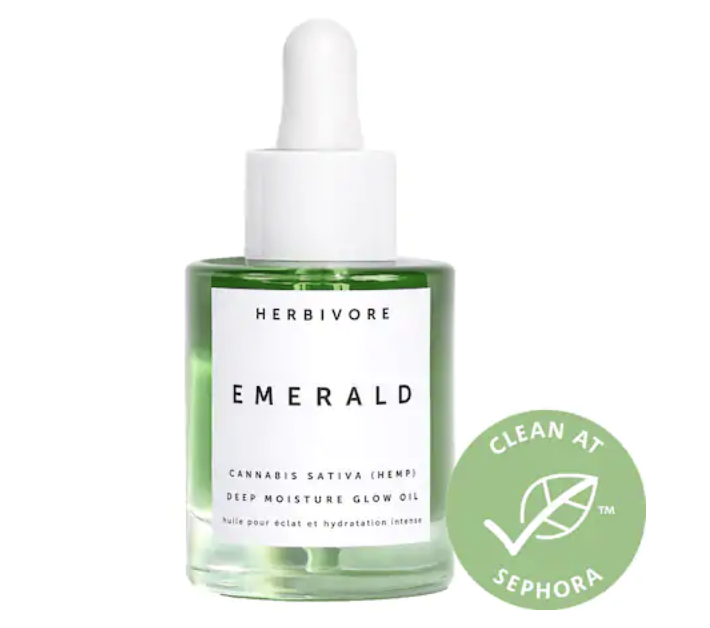
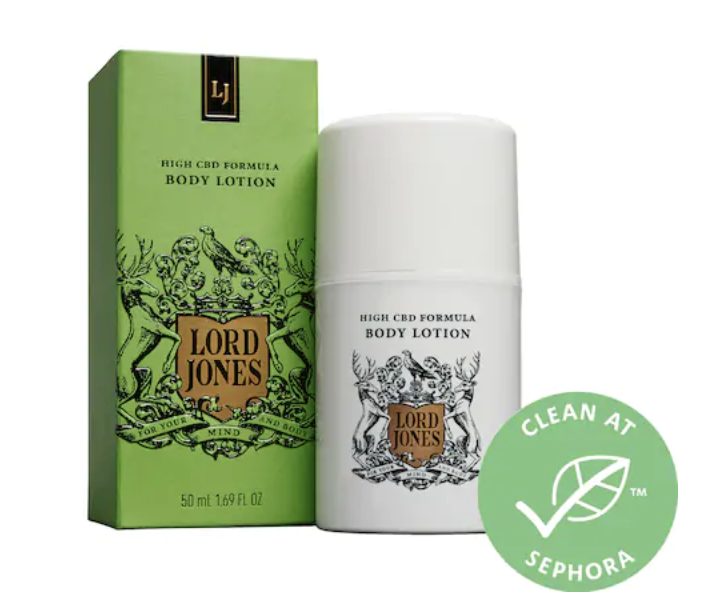



https://www.sephora.com/search?keyword=cbd
Sephora: Herbivore Organic, Lord Jones, Kiehl’s, Josie Maran, and Milk Makeup CBD products
For instance, although there are marijuana references, “Kush” and “Dope,” for Milk and Josie Maran primary packaging, it is not at the expense of good branding and messaging. More so, the Kiehl’s and Herbivore pale green glass (an organic go-to) and high-end typography and packaging suggest they are in on the fun of being able to publicly talk about “weed” while not forsaking their commitment to high quality products.
The rhetorical strategy here does not shy away from its contents but rather marks it acceptable by way of common packaging found in similar non-CBD beauty products. As for the following packing for Vertly, apothecary and luxury elements are used to validate CBD’s confirmed medical and beauty benefits.
The conversation is inherently, “Why would Sephora, Barney’s, Neiman Marcus support this if it wasn’t true?” And the perk? Consumers can buy these and not come off as a “pothead,” and let’s face it: that is what many mainstream consumers fear. This transition from stigma to benefit is all in the packaging. Period.

http://nymag.com/strategist/article/best-cbd-skincare-products.html
Yes, informing the general public of the differences between TCH, CBD, and Hemp are important. They have very different purposes, but CBD has the opportunity to brand itself as something outside of the “4:20” culture. The CBD PR movement all starts with education, but really, it is best promoted with packaging and branding first. These high-end companies have figured it out: the medicinal benefits have become better received in many states, and are recognized as having premium perks for those who can afford it. Packaging that reinforces positive branding while eliminating harmful cliches is possibly the most important first step.
Smart branding and packaging (which is one and the same these days) is the best move forward for beneficial products which were once stigmatized, but no longer are. At Vivabox, we’d like to see a multi-branded CBD ‘starter’ kit with great branding, education, trial, and social media hooks. It’s exciting to see packaging as much more than a box. To us, it’s where the story starts.
Looking for a solution? We can help.
Headquarters
9211 Corporate Blvd Ste 110
Rockville MD 20850
Satellite Offices
Dallas, TX
Paris, France
San Francisco, CA
Scottsdale, AZ
info@vivaboxsolutions.com
Phone
800-529-1988
Minimum Order Quantities:
RPET Totes: 3,000
Kraft Shoppers: 5,000
Rigid Boxes: 3,000
Folding Cartons: 5,000
5 Retail Trends You Can Actually Activate for 2019
branding
In 2019, the market will be defined by emerging technologies that change the way consumers interact with their favorite brands, a more tangible experience (online and on-site), and the emergence of new types of e-commerce.
Let’s take a look at five important trends that will shape retail in 2019 and forward.
1. Brand as Culture
Millennials’ changing preferences and attitudes regarding corporate responsibility and social consciousness have already impacted how retail brands present and position themselves. The trend has resulted in brands equating their internal culture with their exterior identity. Companies are increasingly engaging consumers outside of traditional shopping parameters and becoming cultural figures.
What ideas can you bring to market if you think of physical intercepts as a cultural representation of the connection you have with your consumers vs “buy it now”
Companies can embrace physical and ideological experiences that immerse customers into a full buyer’s cycle. The days of clever campaigns being enough are pretty much done. Companies will have to consider the image their brand conveys to the world in ethos, all senses, and in packaging (which are blending more than ever).
2. Experiential Retail
The old model of in-store and online retail strictly focused on products being sold. However, consumers have been moving away from strictly shopping for products and are now searching for a more engaging experience. The trend has been primarily driven by millennials and their preference for experiences over things.
Consumers are shopping more with their emotions rather than their wallets. Note, we said shopping. Physically walking into a store should be an escape, a chance to browse, a chance to meander. Buying, on the other hand, is assumed to be pretty quick and easy — a few clicks, done.
Re-designed signage and remodeling a store aren’t enough, both the stores and the brands now realize they can only survive if they create something worth visiting.
For example, stores like Sephora have rethought their retail experiences by combining traditional elements, trial, loyalty programs, and their mobile apps pretty seamlessly. (they’re a client, we’re biased)
Samsung unveiled a $43 million “pop-up” that features its products but doesn’t have any for sale.
The emergence of virtual reality, augmented reality, and improved mobile connectivity have added new layers of experience to add to their retail models.
Packaging for online and on-site stores has also emerged as an essential experiential touchpoint. Gone are the days of brown boxes with packaging tape, bubble wrap, and packing peanuts as “the last mile experience.“
Consumers want their packaging to mean something more. To mean something, actually. Colors, fonts, textures, and materials are all a selling point, as well as its ability to be recycled or repurposed. It’s almost as important as the product it holds.
3. Faster Shipping
E-commerce continues its march toward becoming the most popular purchasing medium. In September 2018 the sector expanded by 11.4%. Today, most major brands have an online presence, and they all offer comparable prices. Even stores like Amazon and Walmart have become largely competitive, so retailers seeking to differentiate themselves have had to find other ways to deliver value.
A current Marketing Charts study found that the amount of time people are willing to wait for free shipping has dropped from 5.5 days in 2012 to 4.5 days on average. Programs like Amazon Prime have made two-day shipping the standard, so cutting down on shipping time is vital for any e-commerce business looking to stay on top.
In-store pick-up, new delivery systems, special access, or making the package worth waiting for are all ways to combat warp speed expectations.
4. Subscription E-Commerce
Today’s buyers are also increasingly seeking shopping/buying that is tailored to their preferences and delivered directly to their doors. These trends have resulted in the emergence of subscription e-commerce, which means businesses curate products and ship them to customers with regularity.
According to a recent report by McKinsey & Company, 15% of online consumers signed up for subscription services in 2017, and that trend is only growing.
That said, marketing and maintaining a subscription base can be expensive for some brands and retailers. This is an area where a well-defined test is a must.
5. Multi-Channel, aka Omnichannel, aka The Way Consumers Shop & Buy Naturally in 2019
Even though many brick-and-mortar stores are closing, they still play a significant role in the purchase process. The difference is that it has transitioned from the primary point of sales to being part of a broader retail strategy. Instead of a single touchpoint for consumers, the growing trend in retail has been to expand how brands use brick-and-mortar to catch leads and convert them.
How can retailers maintain omnichannel active and keep personalization and fulfillment streamlined?
This calls for deep integration across all channels, including websites, marketplaces, social media, and brick-and-mortar. It’s time to get departments really working together, and sharing data, and thinking differently about sales attribution. The consumer is already fluid, but most retailers and brands are less so.
Multi-channel is vital for captivating consumers and keeping them engaged from first impressions to the point of sale. Focusing on providing excellent experiences across channels is the best way to stay vital in the upcoming years. Oh how we love a good CX strategy.
The latest trends in retail are driven by a combination of a changing technological landscape and the shifting preferences of consumers created by millennials. By embracing these trends and preparing for them, retailers can look to 2019 as another favorable opportunity to grow.
Looking for a solution? We can help.
Headquarters
9211 Corporate Blvd Ste 110
Rockville MD 20850
Satellite Offices
Dallas, TX
Paris, France
San Francisco, CA
Scottsdale, AZ
info@vivaboxsolutions.com
Phone
800-529-1988
Minimum Order Quantities:
RPET Totes: 3,000
Kraft Shoppers: 5,000
Rigid Boxes: 3,000
Folding Cartons: 5,000
Know Your Customer: Developing Personas for Packaging Strategy
branding
The key to a successful marketing or branding campaign starts with understanding your target audience, and, a well-defined audience begins with developing buyer personas. In the age of IG and e-commerce, your primary and secondary packaging design should most definitely be part of your CX process and strategy.
A buyer persona is defined as a well-developed character created from customer trends and demands. Most companies attract more than one group of people, so they find it beneficial to develop three-dimensional personalities with names, ages, occupations, certain social statuses, education levels, aesthetic principles, family size, buying trends, and more. Brands interact with people, not cardboard cutouts, so developing these personas are helpful to create a range of insights.
Simply put, developing personas is important, and it is incredible what insights surface when companies take the time to get to know them.
Personas and Packaging
When thinking about brand development and the multiple personas you must nurture, packaging becomes a primary touchpoint. Outside of the actual product, the package is the most tangible branding tool a business has, and these personalities can have a significant impact on your design strategy.
For example, if you’re targeting an older persona, you may want to work with more traditional packaging or play with nostalgic designs that tug at their heartstrings or work with packaging that can be repurposed. You also want to assess your font size and contrast and including smart and obvious ways to open the package for hands that have lost some dexterity.
If you’re going to attract a millennial persona, you may want to develop a more sustainable solution that works with contemporary or forward-looking design and trends. And be sure it has an element of IG-bait.
Packaging the same product in different ways can be a great way to embrace all of your personas without exclusion.
The Power of Personas
Once your business has developed well-rounded personas, what can you do with them? You can do anything! Hopefully, you use them to make every brand decision. Considering that it is the consumer that creates demand, it is essential that all marketing and branding strategies keep all personas in the forefront of every decision.
Consulting personas for insights into what your audience will identify with and what will capture their interest is essential to determining the shape, font, color, textures, and materials you use in your packaging design.
As you develop your packaging for your personas, don’t forget to measure your successes and room for improvement. Analyzing past data and current customer responses is a great way to test if your packaging ideas are meeting consumer standards and how they may be changing. Don’t let your personas get stagnant. They should be an ever-changing point of reference to keep your brand, and packaging, moving forward.
Looking for a solution? We can help.
Headquarters
9211 Corporate Blvd Ste 110
Rockville MD 20850
Satellite Offices
Dallas, TX
Paris, France
San Francisco, CA
Scottsdale, AZ
info@vivaboxsolutions.com
Phone
800-529-1988
Minimum Order Quantities:
RPET Totes: 3,000
Kraft Shoppers: 5,000
Rigid Boxes: 3,000
Folding Cartons: 5,000



